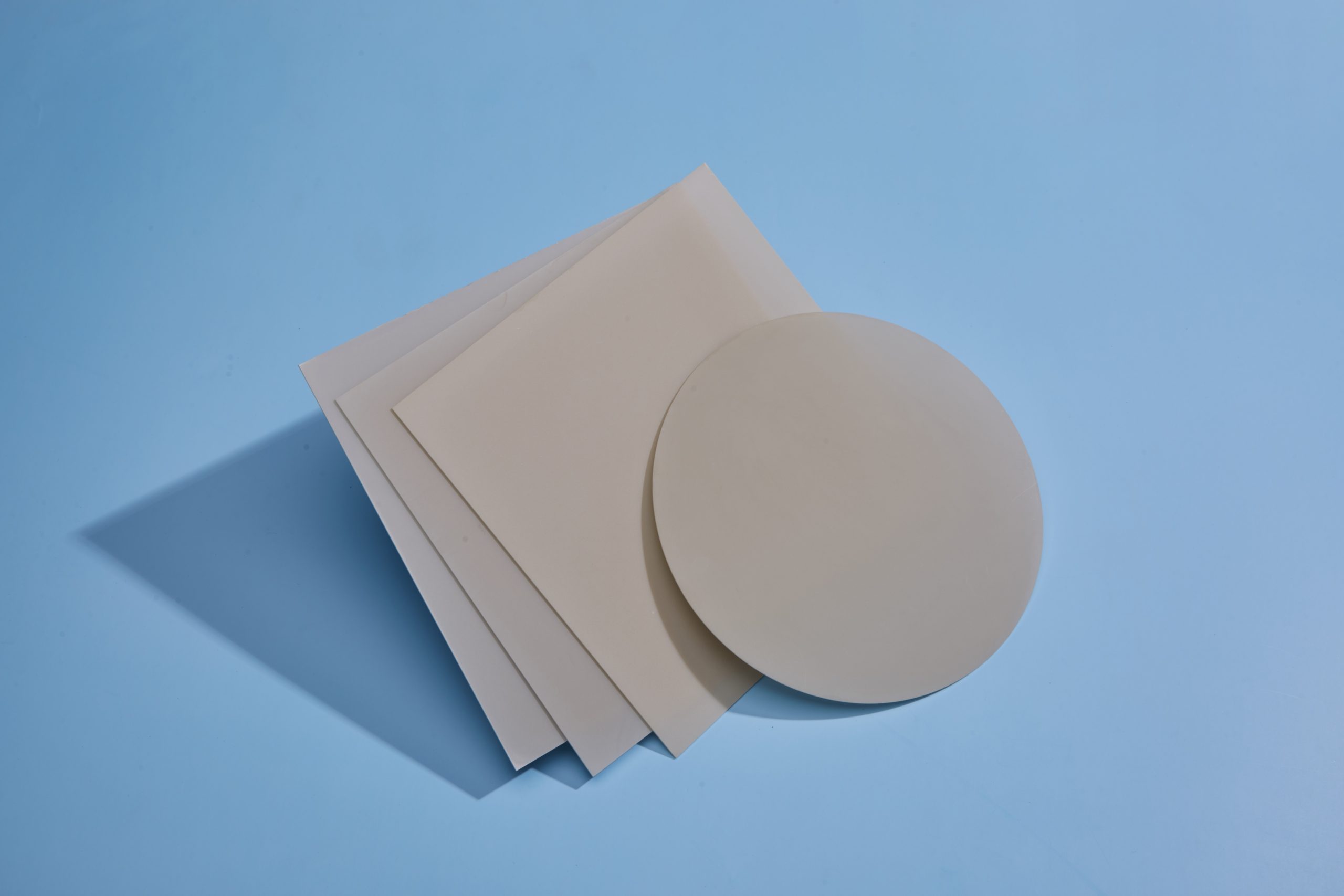With the continuous advancement of power semiconductor technology, efficient heat dissipation solutions have become increasingly important, especially in high-power, high-density applications such as electric vehicles, industrial automation, and 5G communication. Ensuring device stability and prolonging its lifespan have become key factors for industry development. In recent years, aluminum nitride (AlN) and silicon nitride (Si₃N₄) ceramic substrates, with their excellent thermal conductivity, high-temperature performance, and electrical insulation properties, have become core technologies in the power semiconductor packaging field.
Thermal Conductivity Advantages of Aluminum Nitride and Silicon Nitride Ceramic Substrates
Aluminum nitride and silicon nitride ceramic substrates, due to their high thermal conductivity and good mechanical strength, have become ideal choices for packaging high-power semiconductor modules. The thermal conductivity of aluminum nitride is typically as high as 170 W/m·K, more than twice that of common metals, while silicon nitride offers outstanding high-temperature performance and excellent chemical stability, making it widely used in high-temperature, high-power applications. Compared to traditional metal substrates, ceramic substrates significantly improve heat dissipation efficiency, reduce performance degradation due to temperature rise, and maintain long-term stable operation.
Expert Analysis: “In power semiconductor packaging, heat dissipation is a major challenge that determines the chip’s performance and reliability. The excellent heat dissipation properties of aluminum nitride and silicon nitride ceramic substrates make them indispensable materials in electric vehicle drive systems, 5G base station power supplies, and industrial control systems,” said Zhang Lei, Chief Engineer at Shanghai Semiconductor Technology Research Institute.

Application of Aluminum Nitride Ceramic Substrates in Electric Vehicles
The power systems of electric vehicles have very high heat dissipation requirements, particularly in high-frequency, high-power battery management systems and electric drive systems, where heat dissipation performance directly affects system efficiency and safety. To meet this challenge, many electric vehicle manufacturers have begun widely adopting aluminum nitride ceramic substrate packaging solutions.
News Case: In 2024, leading global power semiconductor company ON Semiconductor announced that its latest electric vehicle drive system uses aluminum nitride ceramic substrate packaging technology. The system integrates efficient power switching devices and achieves excellent thermal management through the aluminum nitride substrate. ON Semiconductor stated that this technology allows the electric vehicle’s power system to maintain low temperature operation during high-speed driving and long-duration loads, improving battery life and overall energy efficiency.

Application of Silicon Nitride Ceramic Substrates in 5G Communication Equipment
With the rapid development of 5G networks, the power density of base stations and communication equipment is continuously increasing. Silicon nitride ceramic substrates, due to their excellent high-temperature performance and corrosion resistance, have become ideal materials for packaging RF modules and power modules in 5G base stations. In 5G communication, RF signal transmission requires high-frequency, low-loss materials, and silicon nitride ceramic substrates not only effectively conduct heat but also maintain electrical performance stability in high-temperature environments.
News Case: In 2023, Swiss electronics giant ABB announced that its latest 5G base station RF modules use silicon nitride ceramic substrates for packaging. The silicon nitride substrates can effectively manage the transmission of high-frequency signals and heat dissipation, significantly reducing electromagnetic interference (EMI) and ensuring the efficient operation of 5G equipment. ABB’s engineers pointed out that this technology will greatly enhance 5G network bandwidth, coverage, and signal stability.

Performance Advantages of Silicon Nitride/Aluminum Nitride Ceramic Substrates by Zhejiang Zhengtian New Materials Co., Ltd.
Zhejiang Zhengtian New Materials Co., Ltd., through independent research and development, has launched aluminum nitride and silicon nitride substrates that not only provide excellent thermal conductivity but also offer outstanding electrical insulation, effectively reducing electrical interference and ensuring the safety and stability of high-power electronic devices in complex environments.
Mr. Lin, the Chief Technology Officer of the company, stated: “We have made comprehensive innovations in the technology of aluminum nitride and silicon nitride ceramic substrates to ensure they maintain efficient heat dissipation performance in higher power densities and smaller packaging designs. With the continuous growth of demand in electric vehicles, 5G, and efficient energy systems, our ceramic substrate products will provide reliable thermal management solutions for these industries, ensuring devices continue to operate stably under high loads and high temperatures.”

Product Features and Technological Advantages:
High Thermal Conductivity: Aluminum nitride ceramic substrates have a thermal conductivity of up to 170 W/m·K, and silicon nitride ceramic substrates offer excellent thermal stability, effectively helping electronic devices achieve excellent thermal management.
High-Temperature Resistance: Silicon nitride substrates can operate stably in high-temperature environments exceeding 200°C, making them suitable for high-power, high-frequency applications.
Electrical Insulation: Aluminum nitride and silicon nitride substrates provide excellent electrical insulation, effectively isolating high and low voltage circuits to ensure system safety.
High Mechanical Strength: Ceramic substrates possess excellent mechanical strength and durability, able to withstand long-term high loads and harsh operating environments.

Future Prospects: Evolution and Innovative Applications of Ceramic Substrates
With the continuous development of technology, the application of aluminum nitride and silicon nitride ceramic substrates in power semiconductor packaging will see further innovation. In the future, with the increase in packaging integration and power density, ceramic substrate designs will evolve towards more efficient and refined directions. Researchers are exploring composite substrates that combine multiple ceramic materials to further enhance heat dissipation and mechanical strength. Additionally, in terms of environmental friendliness and sustainability, more and more ceramic substrates will adopt green manufacturing processes, reducing energy consumption and carbon emissions during production.
Looking Ahead, as the demand for efficient heat dissipation and thermal management continues to rise in fields such as electric vehicles, 5G communications, industrial automation, and renewable energy, aluminum nitride and silicon nitride ceramic substrates will become an indispensable part of semiconductor packaging technology, providing strong support for various high-power, high-efficiency devices.
The application of aluminum nitride and silicon nitride ceramic substrates in power semiconductor packaging is increasingly becoming a highlight in the industry. With their excellent thermal conductivity and high-temperature resistance, ceramic substrates not only solve the heat dissipation challenges of power semiconductors but also provide reliable technological support for cutting-edge fields such as electric vehicles, 5G communications, and renewable energy. With the continuous advancement of technology, the application of ceramic substrates will deepen further, offering more possibilities for the future of intelligent and environmentally-friendly electronic products.





